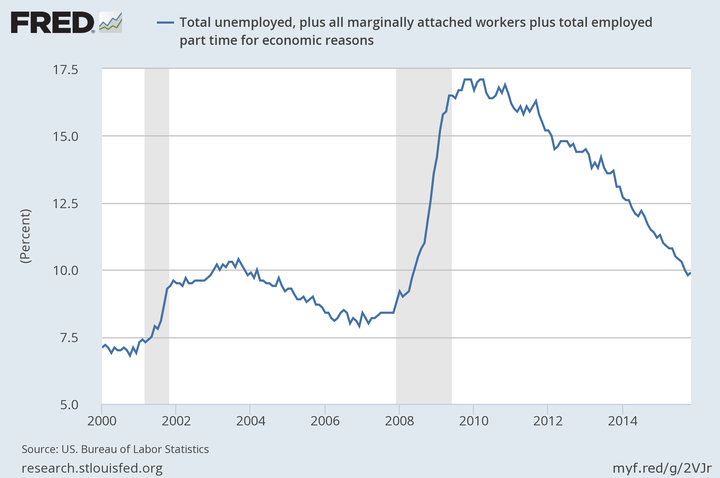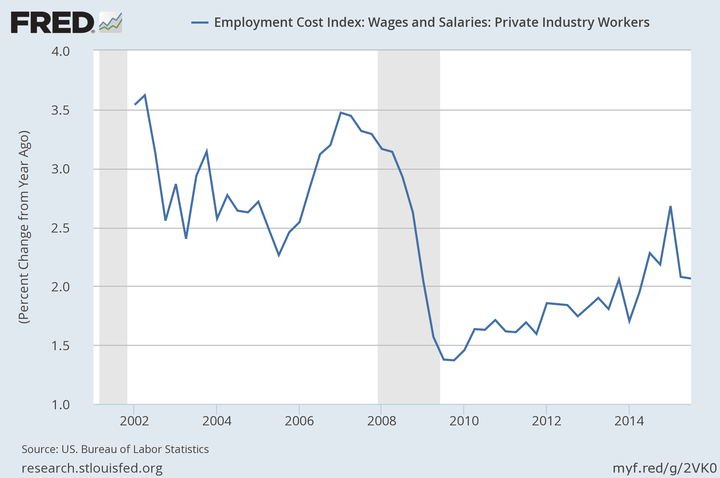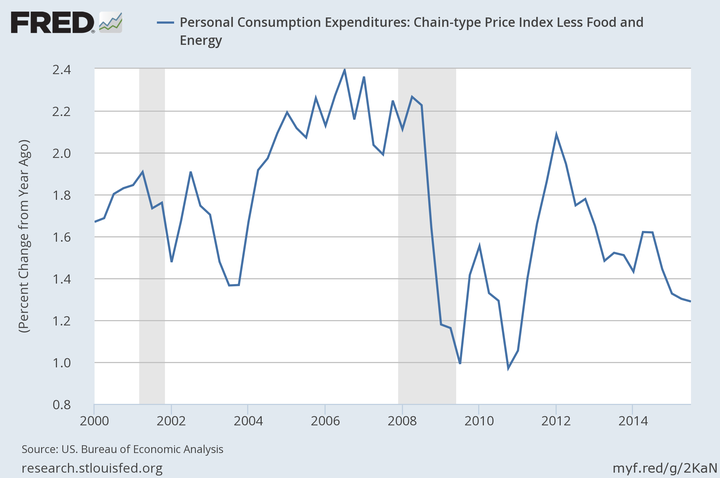Seven years after it cut interest rates to zero in the depths of the financial crisis, the Federal Reserve raised rates on Monday.
Normally, the Fed raises rates when it worries that the economy is overheating. But this time, it's different. Three key indicators show that the economy, despite adding jobs for an unprecedented 62 months in a row, still has a lot of room for sustainable improvement.
Here's why:
1) There are still more Americans on the fringes of the workforce than there were before the Great Recession. This chart shows what's called the U6 rate, which measures unemployment plus people on the fringes of the workforce: those who have a part-time job because they can't find full-time work, or who have stopped looking for a job because they don't think they'll find one. Before the crisis, the U6 rate was right around 8 percent. Now, it's just under 10 percent.

2) Wages are rising, but not very quickly. Instead, they're in the 2 to 2.5 percent range. There are lots of possible explanations for why there aren't bigger gains, and the number of workers on the sidelines in the chart above is part of the answer. With growth around 2 percent, soaring paychecks aren't likely to threaten to push the economy towards dangerously high inflation anytime soon.

3) Speaking of dangerously high inflation, that's not happening. In fact, inflation has been remarkably low as the economy has recovered, and it has consistently come in under most analysts' projections. Fed Chair Janet Yellen's preferred inflation data point is personal consumption expenditures (PCE) minus food and energy prices. By that measure, inflation is 1.3 percent, below the Fed's 2 percent inflation target.

So if there are still a lot of people on the fringes of the workforce, wages are rising very slowly and inflation is below target, why is the Fed raising interest rates?
Because crisis-era policy has to end at some point. And now that the crash and Great Recession are over, and the Fed wants to move on from the zero interest rate policy those twin catastrophes necessitated. The bank is now more worried about financial market stability than adding more jobs and fattening paychecks, University of Oregon economist Tim Duy argues.
The thinking seems to be that both the markets and the economy can stand to have the bandage ripped off now, so the Fed might as well do it before things change. The
"The Fed thinks there is now more danger in waiting than moving," Duy writes. "And so into the darkness we go."
